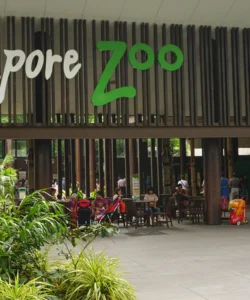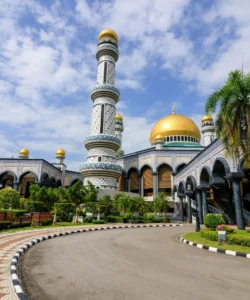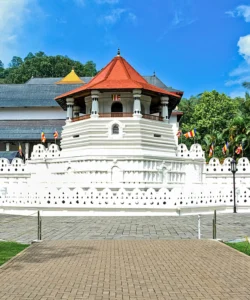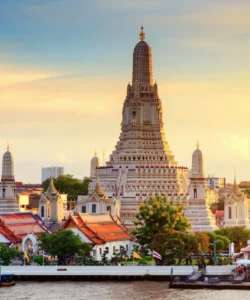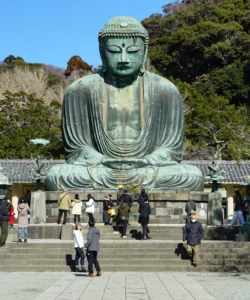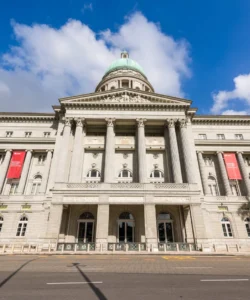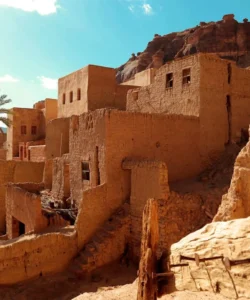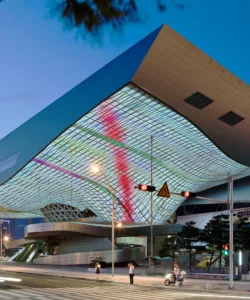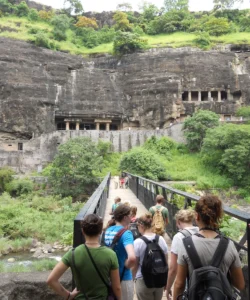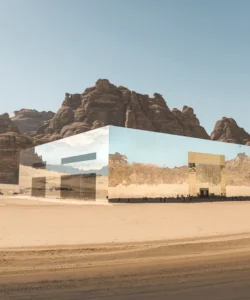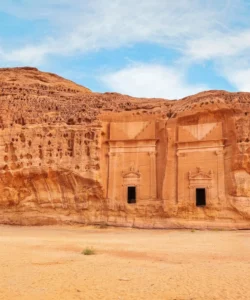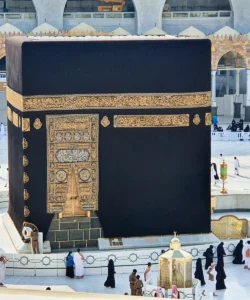Lumbini, located in the Terai plains of southern Nepal, is a profoundly sacred site revered by Buddhists worldwide as the birthplace of Siddhartha Gautama, the Lord Buddha. More than just an archaeological ruin, it is a living pilgrimage destination, envisioned as a universal center of peace and a testament to the origins of one of the world’s great religions.
Name: Lumbini (Nepali: लुम्बिनी; Sanskrit: लुम्बिनी, “the lovely”)
Address: Sacred Garden, Lumbini, Rupandehi District, Lumbini Province, Nepal. It is situated near the Nepal-India border, approximately 22 kilometers (14 miles) west of Bhairahawa (Siddharthanagar) and 272 kilometers (169 miles) southwest of Kathmandu.
How to Get There:
Lumbini’s accessibility has improved, but it often involves multiple legs, emphasizing its pilgrimage nature.
- By Air: The closest airport is Gautam Buddha International Airport (BWA) in Bhairahawa (Siddharthanagar), a relatively new international airport. It has domestic flights from Kathmandu and may have international flights from India and other regional hubs. From Bhairahawa, it’s about a 30-45 minute taxi or bus ride to Lumbini.
- By Bus: This is the most common and budget-friendly option.
- From Kathmandu: Direct buses from Kathmandu to Lumbini take approximately 8-10 hours.
- From Pokhara: Buses take about 6-7 hours.
- From Chitwan (Sauraha): A shorter journey, usually 5-6 hours.
- From the Indian border (Sunauli/Bhairahawa): Lumbini is only about 28 kilometers (17 miles) from the Sunauli border crossing with India. Shared jeeps, taxis, or local buses are readily available from Bhairahawa.
- Private Car: Hiring a private car from major Nepalese cities or from the Indian border offers more comfort and flexibility.
- Within Lumbini: The Lumbini Development Zone is extensive.
- Walking: The Sacred Garden area (the core archaeological site) is walkable.
- Rickshaw/Bicycle: Local rickshaws are commonly used to explore the wider monastic zone, and bicycles can be rented.
- Electric Rickshaw/Boat: Some electric rickshaws and boat rides on the central canal are available for getting around the larger complex, particularly between the East and West Monastic Zones.
- Entrance Fee: There is an entrance fee for foreign visitors to the Sacred Garden area.
- Dress Code: As a sacred site, modest dress is required (shoulders and knees covered). Footwear must be removed before entering the Maya Devi Temple and other sacred areas.
Landscape and Architecture:
Lumbini’s “landscape” is a meticulously planned spiritual park that integrates archaeological remains with modern monastic architecture, all set within a flat, peaceful Terai plain.
- Sacred Garden (The Core Zone): This is the heart of Lumbini and a UNESCO World Heritage Site. It comprises:
- Maya Devi Temple: The central shrine, believed to mark the exact spot of Lord Buddha’s birth. Inside, a Marker Stone pinpoints the precise location, surrounded by ancient brick structures.
- Ashoka Pillar: Erected by Emperor Ashoka in 249 BCE, this monolithic sandstone pillar with its Brahmi inscription unequivocally identifies Lumbini as the Buddha’s birthplace, providing crucial historical evidence.
- Puskarini (Sacred Pond): A beautiful and serene sacred bathing pond where Queen Maya Devi is believed to have taken a ritual bath before giving birth and where the infant Siddhartha was given his first bath.
- Ancient Ruins: Surrounding the Maya Devi Temple are the excavated remains of ancient Buddhist monasteries (viharas) and stupas dating from the 3rd century BCE to the 15th century AD, providing archaeological proof of Lumbini’s long history as a pilgrimage center.
- Bodhi Tree: A sacred Bodhi tree (Ficus religiosa), adorned with prayer flags, stands beside the Maya Devi Pond, where pilgrims often meditate.
- Eternal Peace Flame: A perpetually burning flame symbolizing world peace, located at the starting point of the central canal.
- Lumbini Development Zone (Master Plan by Kenzo Tange): The wider Lumbini complex (4.8 km long and 1.6 km wide) is being developed according to a master plan designed by renowned Japanese architect Kenzo Tange. This plan envisions a non-sectarian monastic zone, separated into:
- East Monastic Zone: Dedicated to Theravada Buddhist monasteries, built by countries like Myanmar (Golden Temple), Sri Lanka, Thailand (Royal Thai Monastery), and Cambodia.
- West Monastic Zone: Dedicated to Mahayana and Vajrayana Buddhist monasteries, built by countries like China, Japan (World Peace Pagoda), South Korea (Dae Sung Shakya Temple), Germany, and Canada.
- International Monasteries: These monasteries showcase a remarkable diversity of Buddhist architectural styles from around the world, each reflecting the traditional architectural aesthetics of their respective sponsoring countries. This creates a unique “open-air museum” of global Buddhist architecture.
- Central Canal: A long, water-filled canal runs between the East and West Monastic Zones, serving as a symbolic and literal divider, with pedestrian bridges connecting the two sides.
- World Peace Pagoda (Japanese Peace Stupa): Located slightly outside the main monastic zone but still within the larger complex, this large white dome-like stupa with a golden Buddha statue is built in a traditional pagoda style, a global symbol of peace.
- Lumbini Museum and Research Institute: Modern buildings housing artifacts, manuscripts, and providing research facilities.
- Lumbini Crane Sanctuary: A wetland area near the complex, safeguarding endangered Sarus Cranes and other birds.
What Makes It Famous:
- Birthplace of Lord Buddha: Lumbini is the unequivocal and historically verified birthplace of Siddhartha Gautama, the Lord Buddha, making it one of the four most sacred Buddhist pilgrimage sites in the world (along with Bodh Gaya, Sarnath, and Kushinagar).
- UNESCO World Heritage Site: Designated a UNESCO World Heritage Site in 1997, it is recognized for its outstanding universal value as the most holy and significant place for one of the world’s great religions, preserving important archaeological evidence of early Buddhist pilgrimage.
- Ashoka Pillar: The presence of Emperor Ashoka’s inscribed pillar (dating to 249 BCE) provides definitive historical proof of the Buddha’s birthplace, making it an invaluable archaeological artifact.
- International Monastic Zone: The unique collection of Buddhist monasteries built by various countries from around the world, each in their distinctive national architectural style, creates a powerful symbol of global Buddhist unity and diversity.
- Symbol of Peace: With the Eternal Peace Flame and the World Peace Pagoda, Lumbini is promoted as a universal center for peace and harmony, attracting pilgrims and visitors from all faiths and backgrounds.
- Archaeological and Historical Significance: Ongoing excavations continue to reveal layers of ancient structures, providing crucial insights into the early history of Buddhism and pilgrimage.
- Sacred Maya Devi Temple and Puskarini Pond: These sites are central to the pilgrimage, connecting visitors directly to the moment of the Buddha’s birth and early life.
Differences from Some Other Wonders:
- Birthplace of a Global Religion’s Founder: While other sites are sacred for various reasons (e.g., temples with specific deities or relics), Lumbini’s singular fame is its being the exact physical birthplace of the founder of a major world religion. This direct connection to a foundational event sets it apart.
- International Monastic Zone with Diverse Architecture: Unlike concentrated ancient temple complexes (e.g., Borobudur, Bagan, Angkor Wat) that reflect a specific period or local style, Lumbini’s monastic zone features numerous contemporary monasteries built by different countries, showcasing a global panorama of modern Buddhist architectural styles within one planned complex.
- Ashoka Pillar as Definitive Proof: The conclusive archaeological evidence provided by the Ashoka Pillar’s inscription, unequivocally marking the Buddha’s birthplace, gives Lumbini a level of historical certainty not always present for every ancient sacred site.
- Focus on Origins and Peace: While other Buddhist sites focus on enlightenment (Bodh Gaya), first sermons (Sarnath), or parinirvana (Kushinagar), Lumbini’s core identity revolves around the birth, childhood, and the theme of universal peace.
- Planned Development Zone (Kenzo Tange): The site’s meticulous development according to a modern master plan by a renowned architect (Kenzo Tange) is a distinct feature, aiming for harmonious growth as a pilgrimage center, contrasting with organic urban development around other sites.
- No High Mountains or Lakes as Primary Feature: Unlike other Nepalese wonders like Swayambhunath or Boudhanath (hilltop stupa, vast spherical stupa), or the Himalayas, Lumbini is located in the flat Terai plains, with its grandeur stemming from its spiritual significance and architectural collection, not dramatic natural topography.
- Emphasis on Archaeological Site within a Living Pilgrimage: While a vibrant pilgrimage site, the core experience is centered on the archaeological remains within the Sacred Garden, providing a tangible link to the distant past.
Lumbini Photos:































